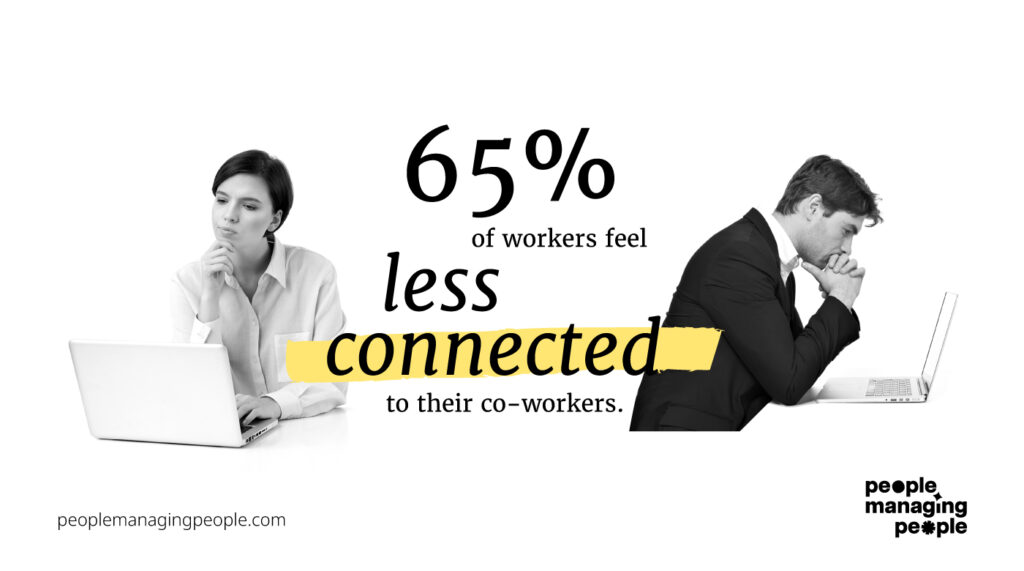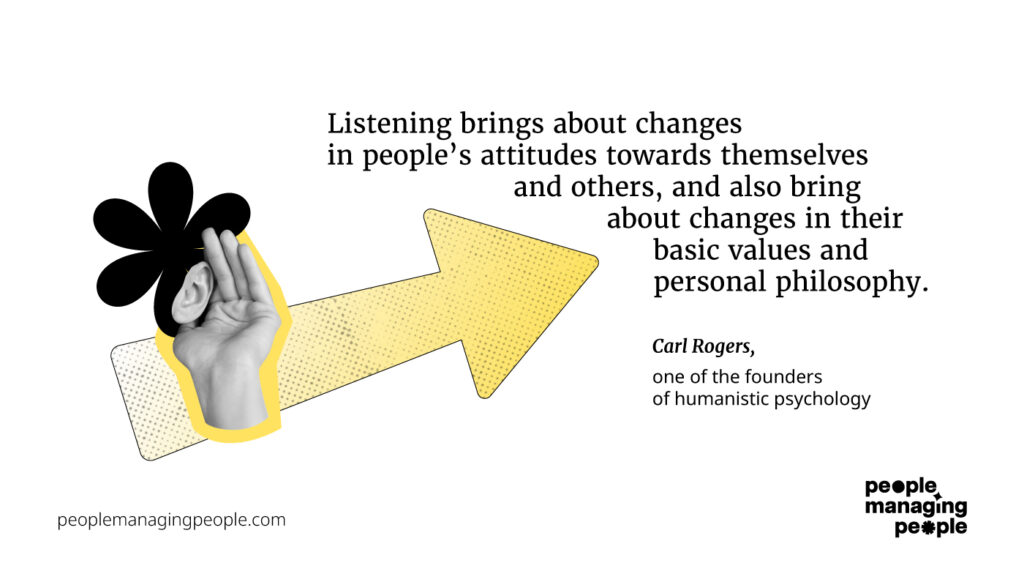Earlier this year, the US Surgeon General, Dr. Vivek Murthy, declared a ‘loneliness epidemic’ and proposed a national framework to rebuild social connection and community in America.
His conclusions are stark. When people are socially disconnected, their risk of anxiety and depression increases (the increased risk of premature death associated with social disconnection is comparable to smoking daily!).
On top of this, social disconnection reduces productivity in workplaces, worsens performance in school, increases polarized views, and diminishes civic engagement.
His rallying cry? “The epidemic of loneliness and isolation has fueled other problems that are killing us and threaten to rip our country apart. Given these extraordinary costs, rebuilding social connection must be a top public health priority for our nation. It will require reorienting ourselves, our communities, and our institutions to prioritize human connection and healthy relationships.”
I speak to CEOs and Chief People Officers every week who are losing sleep (and employees!) over declining engagement scores, burnout, faltering revenue growth, and falling productivity.
They’re launching all sorts of initiatives to tackle these issues, but often focusing on symptoms rather than root causes.
As an alternative, in this article I propose three principles that can help leaders build cultures that prioritize relationship-building as a driver of culture and business performance.
Why Connection Matters

Since the pandemic, despite the many advantages offered by remote and hybrid working, 65% of workers feel less connected to their co-workers.
Just 4 in 10 US employees strongly agree that someone at work seems to care about them as a person, contributing to the alarming statistic that approximately half of Americans report feeling lonely and that their relationships with others are not meaningful.
Dr. Murthy believes ‘social connection stands out as a largely unrecognized and underappreciated force for addressing many of the critical problems we’re dealing with, both as individuals and as a society’. I think the same applies to the world of business.
I was grappling with similar challenges as Chief People Officer of a global consulting firm as we emerged from the pandemic and tried to adjust to the challenges posed by a more geographically dispersed workforce and a high proportion of staff who had never experienced the vibrant office-based culture we’d built.
We were experiencing significant attrition, increased medical leaves, and our engagement surveys and conversations with employees indicated that people were feeling disconnected from our agency and each other.
The social gatherings we’d coordinated to bring people together (sports days, mid-afternoon ice cream sessions in the cafeteria, quizzes on Zoom) were fun for some but didn’t foster meaningful human connection.
Re-Prioritizing Human Connection And Healthy Relationships
Recognizing that we needed to be more intentional about making relationship-building a priority, we piloted a personal development program with 50 of our team, a cross-section of the organization (including members of the C-Suite who had been with the company for more than a decade, and new college graduates who had been with us less than six months).
We worked with a social enterprise, Talk For Health, to train cohorts of our team in therapeutic talking and listening skills, providing them with a safe space to talk openly and the skills to support one another so that they felt well listened to.
The approach was developed by psychotherapist Nicky Forsythe, CEO of Talk For Health, and it has been applied in the NHS in the UK for the last decade, benefitting more than 1,000 people. It’s been proven to improve wellbeing, reduce feelings of loneliness and boost the sense of connection between participants.
It was a considerable time investment (92% of people who signed up completed the 12-hour program over several consecutive weeks). Still, it had a real impact—significant well-being improvements (measured using the WHO5 scale) and stronger relationships across teams, offices, and geographies.
Given my role as Chief People Officer, I was thrilled with the measurable impact on participant wellbeing. But beyond that, the program also served as a trojan horse for tackling people's sense of disconnection. A consultant commented, “I signed up to develop my listening skills and become a better manager. I stayed because of the profound sense of connection I felt with others.”
Beyond simply ‘learning to listen’ better, several other philosophies underpinning the program positively impacted wellbeing and relationships.
I believe each plays a critical role in contributing to organizational cultures where people feel a true sense of connection to their colleagues.
1. Make time and create spaces where people can talk truthfully, free of judgment
Our society, and the businesses in which we spend much of our lives, are competitive. Many of us have become used to wearing a ‘game face’ to hide our vulnerabilities and perceived weaknesses from others, particularly in a professional context.
Robert Kegan sums it up nicely: “In an ordinary organization, most people are doing a second job no one is paying them for… Most people are spending time and energy covering up their weaknesses, managing other people’s impressions of them, showing themselves to their best advantage, playing politics, hiding their inadequacies, hiding their uncertainties, hiding their limitations.”
Imagine the emotional energy this would unlock if this weren’t the case!
It turns out that it’s good for our psychological wellbeing when we have spaces and people with whom we can talk truthfully about what’s really going on behind the social masks we wear.
What holds many of us back is fear of judgment. Will I look stupid? Is it socially acceptable for me to feel this way? What will others think of me if I say this out loud?
A significant part of the training we participated in involved learning to remove our social masks by sharing short personal stories about our lives and what had shaped us, as well as what was happening in our lives in and outside of work.
I spoke about the profound homesickness I was feeling at the time, having been stuck in the USA for more than two years, unable to fly back to see my parents due to visa restrictions. It wasn’t something I typically talked about at work, but sharing openly with my colleagues was liberating.
I felt seen and heard as people made space for my story. As trust grew within the group, people opened up about significant events in their lives—the death of a loved one, living with a disability they typically didn’t talk about, and their personal experience of discrimination.
As one participant put it, “I realized that my colleagues are human first and foremost, with real struggles, successes, and aspirations. Taking part made me feel closer to my colleagues than ever before.”
2. Ensure people are well listened to; teach people to listen REALLY well
The benefits of being well listened to are well known. Actively listening to someone can reduce their feelings of social anxiety and loneliness and lift feelings of well-being and belonging.
But most of us aren’t surrounded by incredible listeners. It's a skill that is undertaught compared to its counterpart, presentation skills, and studies have shown that people’s appraisal of their listening skills is similar to their assessment of their driving abilities in that most adults think they are above average.
A 2019 survey revealed, perhaps unsurprisingly, that ‘failing to listen properly’ was the number one gripe employees had with their manager. The difference between good and poor listening can impact the level of a manager's influence and the trust they inspire.
Becoming a good listener requires practice and focus. In the past, I’ve taken part in ‘active listening’ training where I’ve been told that being a good listener is about ‘making eye contact’, ‘mirroring people’s body language’, and ‘nodding and making uh-huh noises to show you’re following them’.
Of course, it’s possible to do all these things and maintain the act of listening without actually taking in anything someone says. It’s entirely human for our minds to wander while listening to others. Research suggests that this happens 50% of the time for most of us.
One reason is that our brains can process speech at many more words per minute than the average person can talk, so we have a lot of bandwidth to think about other things while people are talking to us. And, of course, doing this inhibits the sense of connection that happens when someone gives us their full attention.
On top of this, many other engrained habits get in the way of us listening well and ensuring people feel heard: our tendency to interrupt, to finish people’s sentences for them, to offer our (unsolicited) opinions and solutions, or jump in with our own story or anecdote, triggered by something someone else has said (‘You’re struggling with your manager? Let me tell you about what my manager did last week ‘).
As Stephen Covey points out in The Seven Habits of Highly Effective People, “Most people do not listen with the intent to understand; they listen with the intent to reply.”
Starting to unlearn these habits proved transformational for the training cohort I was part of. Learning a structured framework helped us start to avoid responses that get in the way of connection and gave us the language and tools to pause and respond in a way that made people feel heard.
Having been through this experience, I find myself reflecting on an exchange I witnessed between a relatively junior consultant (who identified as black) and a (white) senior executive, which demonstrates the impact of failing to listen well.
Many of our black employees were struggling in the wake of several shootings of unarmed black men in America. I remember the anguish on this consultant’s face as they recounted, "He [the executive] kept telling me that if I was feeling stressed, I should go for a run. That’s what works for him. Ahmaud Arbery was out for a run when he was shot and killed".
Had the executive team member learned to listen and respond with empathy rather than trying to ‘fix’ an issue they could not solve, they might have avoided the significant disconnect and loss of trust between them and this team member.
3. Encourage people ‘to help and be helped’
A key mechanic for the sessions we participated in was the idea of ‘sharing the air’. Each group member had the same amount of time to talk and be well listened to.
No one got more airtime because their story was deemed more important. The reciprocal nature of being listened to, as well as listening to others, was a significant factor in the increased social cohesion we experienced.
Dr. Murthy, similarly, advocates that we should ‘help and be helped’ as a way of strengthening social bonds: "What I find profoundly empowering about addressing loneliness is that the ultimate solution to loneliness lies in each of us. We can be the medicine that each other needs. We can be the solution other people crave. We are all doctors and we are all healers."
Research shows that helping others can yield significant well-being benefits. That played out for us.
I found that listening to others gave me a sense of perspective on my own challenges, and I felt an emotional uplift as I received feedback from others about how much better they felt for being well listened to by me and others in the group.
Listening Is A Growth Experience

That brings me to one of my biggest takeaways from this experience, that listening well to others left me profoundly impacted too.
I tuned in more deeply to my own emotions in an effort to better connect with those of others. I felt heard, so opened up and reflected on issues I might not usually have articulated to colleagues.
Carl Rogers’ (one of the founders of humanistic psychology) remarks resonate with me:
‘‘Listening brings about changes in people’s attitudes towards themselves and others, and also bring about changes in their basic values and personal philosophy. When people are listened to sensitively, they tend to listen to themselves with more care and make clear exactly what they are feeling and thinking... Not the least important result of listening is the change that takes place within the listener himself. Besides the fact that listening provides more information than any other activity, it builds deep, positive relationships and tends to alter constructively the attitudes of the listener. Listening is a growth experience.”
It frustrates me when business leaders dismiss investment in listening and relationship-building as ‘touchy-feely’ when the impact of having strong connections across organizations can be so transformative on a human and business level.
A wealth of evidence demonstrates that social interconnectedness, and the quality and strength of our relationships with co-workers, significantly impacts their physical and mental health.
Baker and Cross found that high-quality connections "produce feelings of vitality that influence not just mood but performance" AND productivity, an issue that is keeping many business leaders awake at night!
Beyond the theory, I feel lucky to have now experienced this firsthand. Of those who participated in the pilot program, engagement scores increased, and attrition in the year following the program was seven percentage points lower from participants compared to the rest of the organization.
I’ll leave you with a final thought from Dr. Murthy that sums up so much of what’s in our power as business leaders keen to build more connected organizational cultures,
"Human connection is the foundation on which we build everything else. Creating a connected life begins with the decisions we make in our day-to-day lives. Do we choose to make time for people? Do we show up as our true selves? Do we seek out others with kindness, recognizing the power of service to bring us together? This work isn't always easy. It requires courage. The courage to be vulnerable, to take a chance on others, to believe in ourselves. But as we build connected lives, we make it possible to build a connected world.”


